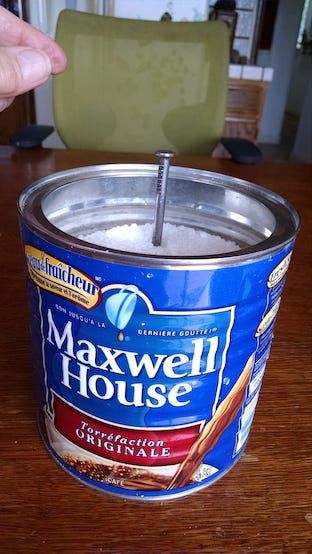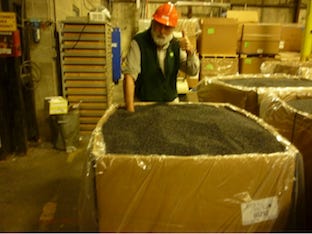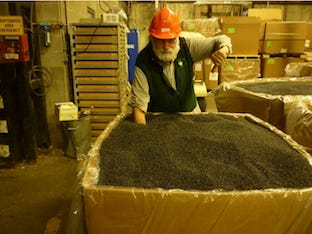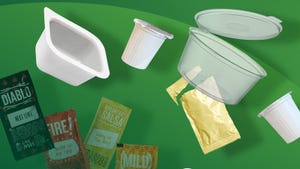Extrusion basics: The relationship of inpush to output, part 1 12564
When pellets fall into the first screw channel in the feed zone, the angled flights of the screw push them downstream, as well as around the barrel circumference. The amount conveyed depends on their size and shape (bulk density), how much they stick to the barrel and how well they slip on the screw root. More sticking to the barrel and less sticking to the root mean more forward-conveying per turn.
February 11, 2016
When pellets fall into the first screw channel in the feed zone, the angled flights of the screw push them downstream, as well as around the barrel circumference. The amount conveyed depends on their size and shape (bulk density), how much they stick to the barrel and how well they slip on the screw root. More sticking to the barrel and less sticking to the root mean more forward-conveying per turn.
However, we mustn't forget the pellets that touch neither the barrel nor the root. These will convey best if they grab onto one another, which is why scrap sometimes feeds better than virgin (for example, heavy-walled high-density polyethylene pipe made from slippery pellets). The deeper the channel, the more important is this "interpelletary grab" and the less important is the barrel temperature.
As a quick and clean test of the slipperiness of the feed, I propose the Maxwell House coffee can test, in which a 6-in. nail ground to a pencil point is dropped into a Maxwell House can filled with pellets to a pre-set level (see the images below). The deeper the nail goes into the plastic, the less efficient will be the feed in terms of volume per turn. This is hardly a standardized test, and a suitable height needs to be found for the plastic being tested (and the nail). But once that is found, it will quickly reveal additives that bloom to the surface (like slip agents and antistats), and may signal a change in granulation, pellet size, scrap percentage, and the like, sounding the alert that something is fishy.
|
|
The origin of this test dates back to my days as a tech service engineer for Union Carbide. We had a customer who would ram his hand down into an open gaylord full of the pellets he was considering: If it went down to his wrist (see left-hand image below), he'd say, "Good stuff, I'll buy it!" If his arm went down to his elbow (see image on the right), he'd say, "Let's have lunch," which meant that he'd probably buy it but wanted some concessions in price, delivery and so forth. But if his arm went in down to his shoulder, he'd say, "You get this greasy stuff out of here, and you too!"
Why a Maxwell House coffee can? Because of the brand motto: "Good to the last drop."
|
|
In future "inpush" installments, Griff will talk about the importance of rear barrel temperature, the ice-skater's effect, biting off more than the screw can chew, how to estimate inpush, grooved barrels, sticking to the screw root (causes and remedies), feeding the "four fluffy Fs" and second-zone surge.
Allan Griff is a veteran extrusion engineer, starting out in tech service for a major resin supplier, and working on his own now for many years, as a consultant, expert witness in law cases, and especially as an educator via webinars and seminars, both public and in-house. Griff wrote the first practical extrusion book back in the 1960s as well as the Plastics Extrusion Operating Manual, updated almost every year, and available in Spanish and French as well as English. Find out more on his website, www.griffex.com, or email him at [email protected].
About the Author(s)
You May Also Like








